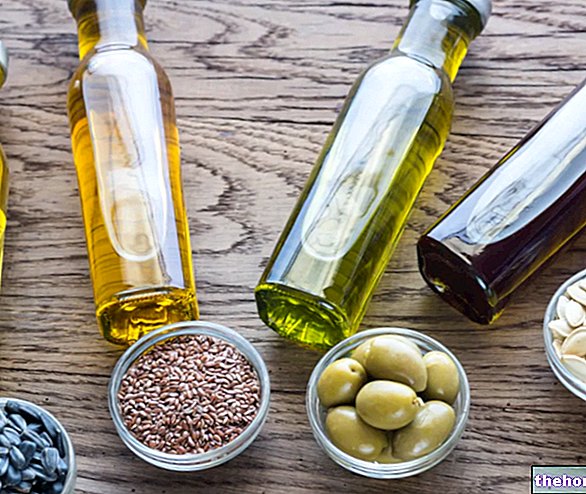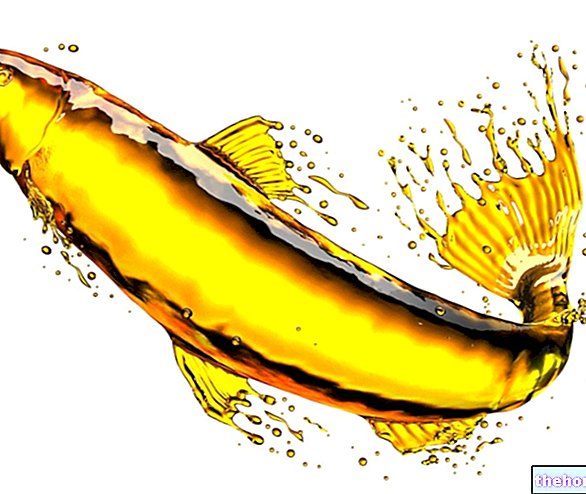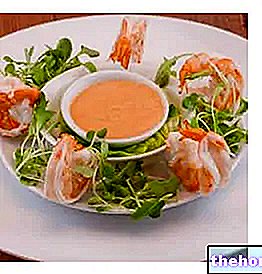What it is and how it is produced
Walnut oil is a food product obtained by pressing the kernels enclosed in the homonymous fruit; considering the high cost compared to commonly used seed oils, in Italy the production process of walnut oil is mostly relegated to small artisanal businesses, typically confined to mountain areas.

Walnut oil belongs to the category of drying oils; when exposed to air it tends to form a solid film, which makes it widely usable in the production of paints.
Food uses
Hardly available in supermarkets, walnut oil is generally sold in natural and organic product shops.
It should be consumed raw and stored in dark glass bottles away from sunlight; In fact, walnut oil turns rancid easily and should therefore be consumed within three months of production. This characteristic is due to the high content of polyunsaturated fatty acids, the same which give the product interesting health properties.
Organoleptic characteristics and combinations
The taste of walnut oil is original and delicate, and ennobles cold dishes giving them a touch of particular flavor. As for the possible culinary combinations, the product is combined with raw meats, fresh cheeses, pasta, legumes, potatoes, cabbage, asparagus, vinaigrette and fish.
Property
The walnut and the oil obtained from it represent in fact one of the few vegetable sources of alpha linolenic acid, which instead abounds in sea fish. The acidic composition of walnut oil is characterized by its richness in polyunsaturated fats (65%) , among which triglycerides rich in omega-six (55%) and omega-three (10%) fatty acids predominate; the monounsaturated fat content (oleic acid, 15%) is also fair. This particular accidental profile gives the product hypotiglyceride-lowering and hypocholesterolemic properties; Walnut oil can therefore prove to be an excellent aid to bring too high blood cholesterol and triglycerides back to normal. To obtain benefits in this sense, it is important that the oil is inserted in a low-calorie food context; moreover, it must be consumed strictly raw (it is contraindicated for cooking food) and in partial replacement of animal and vegetable fats (margarines), never in addition.
Other Foods - Oils and Fats Peanut Butter Cocoa Butter Butter Greaves Wheat Germ Animal Fats Margarine Vegetable Cream Tropical Oils and Fats Frying Oils Vegetable Oils Peanut Oil Borage Oil Rapeseed Oil Krill Oil Poppy Seed Oil Seed Oil Pumpkin Avocado oil Hemp oil Safflower oil Coconut oil Cod liver oil Wheat germ oil Linseed oil Macadamia oil Corn oil Almond oil Hazelnut oil Walnut oil Olive oil Palm oil fish Rapeseed oil Rice oil Pomace oil Seed oil Soybean oil Grapeseed oil Extra virgin olive oil Sesame seeds and sesame oil Lard OTHER ARTICLES OILS AND FATS Categories Food Alcoholics Meat Cereals and derivatives Sweeteners Sweets Offal Fruit Dried fruit Milk and Derivatives Legumes Oils and Fats Fish and fishery products Salami Spices Vegetables Health recipes Appetizers Bread, Pizza and Brioche First courses Seconds pi acts Vegetables and Salads Sweets and Desserts Ice creams and sorbets Syrups, liqueurs and grappa Basic Preparations ---- In the Kitchen with leftovers Carnival recipes Christmas recipes Light diet recipes for Celiacs Recipes for Diabetics Recipes for Holidays Recipes for Valentine's Day Recipes for Vegetarians Protein Recipes Regional Recipes Vegan Recipes



























